Inattendu et plein de surprises
L'IMPLACABLE ET PUISSANT FLUX VERS LE NORD of the Gulf Stream’s clear, tropical waters provides Southeast Florida with beautiful and unique diving opportunities. Passing off the coast of Palm Beach County, the warmer, constantly flowing water nourishes and replenishes reefs and corals that support and attract an incredible diversity of marine life. The reefs offshore are easily accessible and often delight divers with beautiful blue water and visibility that can reach 100 feet.
Just inside Palm Beach Inlet lies an unexpected but wondrously pleasant surprise — the Blue Heron Bridge at Phil Foster Park. The Gulf Stream waters come in twice daily with the high tides, flowing through the inlet to the Intracoastal Waterway, transporting exotic and biodiverse marine life to settle in the shallow waters at Blue Heron Bridge. Recognized as one of the best shore and muck diving sites in the U.S., it’s also considered some of the best muck diving among divers and underwater photographers worldwide.
Don’t expect colorful reefs; prepare instead for a menagerie of unusual and exotic sea life you would typically have to travel the world to see. Every dive can be a surprise — you never know what’s lurking in the next high tide.
Phil Foster Park — better known as Blue Heron Bridge, the Bridge, or just BHB — is a small island inside the Lake Worth Lagoon just off the Intracoastal Waterway. It’s connected to the mainland by two bridges leading from Riviera Beach to Singer Island. There is convenient parking just off the beach, allowing divers to gear up on their tailgates and walk directly from the beach into the water. Divers share the park with beachgoers, who can fill the beach on nice days, so we arrive a couple of hours before high tide. A great dive community frequents BHB, so arriving early gives us time to socialize with fellow divers.
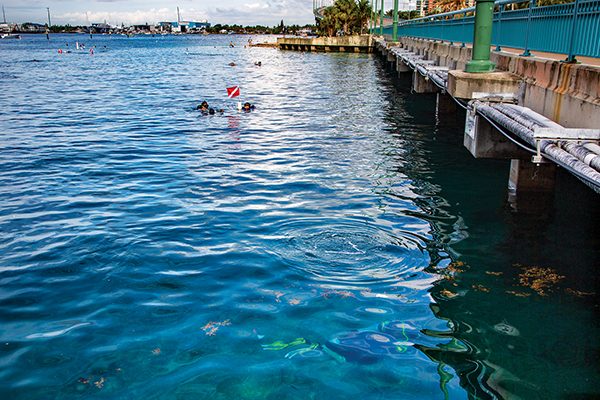
Les plongeurs qui se trouvent sur le côté est du pont Blue Heron profitent de la marée haute pour plonger dans une eau d'un bleu éclatant.
Diving BHB is pleasantly straightforward and has something for just about everyone. Snorkelers, novice divers, freedivers, and experienced divers will appreciate the easy entry right off the beach and the shallow waters, which average around 15 feet with a maximum depth of 25 feet. It is a macro photographer’s dream, with an abundance and variety of underwater subjects.
The BHB area is a no-take zone for tropical fish collecting. Effective April 1, 2019, the Florida Fish and Wildlife Conservation Commission (FWC) approved a regulation to “prohibit the collection and possession of marine life fishery species (species collected for and managed for the tropical aquarium trade) within the park and surrounding waters.” For many years the local dive community unwaveringly championed the cause, working with the Palm Beach County Commission and FWC to successfully implement the policy change to protect this unique area for generations to come.
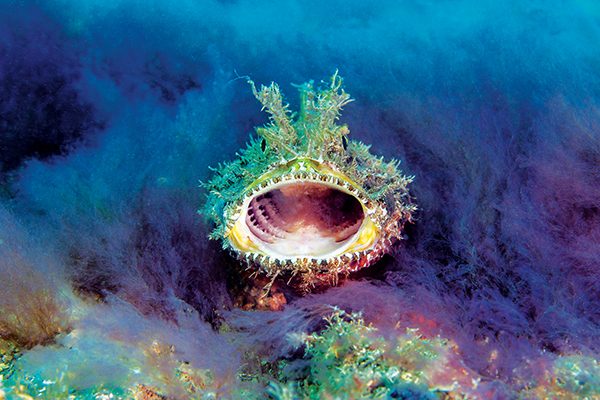
dans les algues, créant ainsi une scène inquiétante.
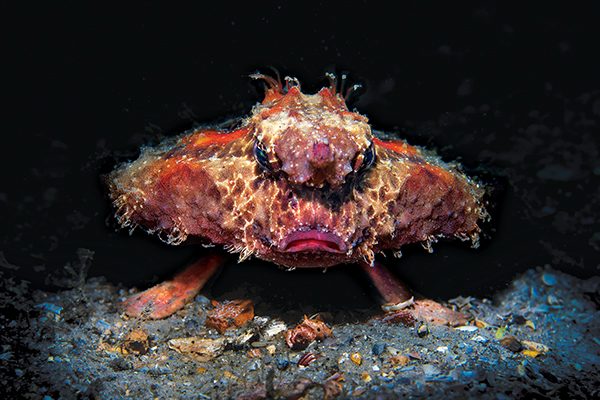
et un visage que seule une mère peut aimer.
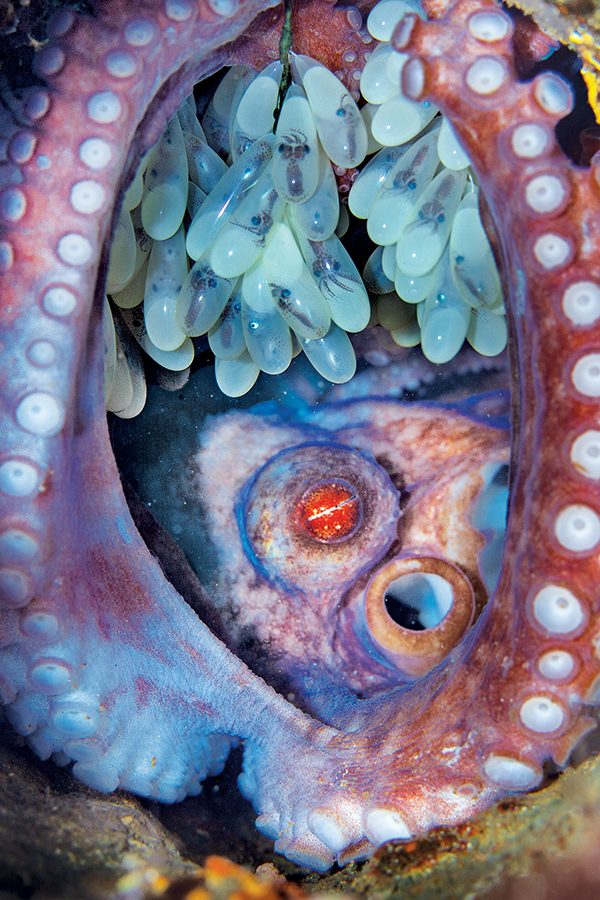
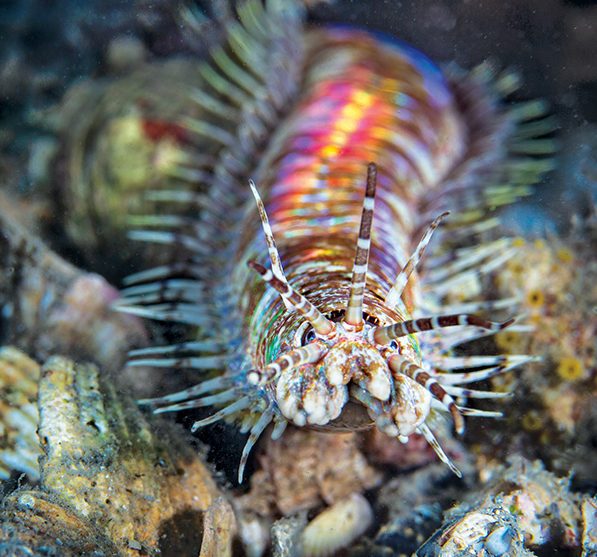
L'illumination de ce ver de terre en pleine exposition met en évidence ses des colorations semblables à celles de l'arc-en-ciel.
Une femelle pieuvre de récif des Caraïbes, sous l'œil attentif d'un observateur, couve et aère ses œufs avec précaution. Regardez de près pour voir les bébés pieuvres à l'intérieur des nacelles.
En 2012, la ville de Riviera Beach a ajouté un sentier de plongée libre de 800 pieds entre la plage et le chenal de navigation, créant ainsi un récif artificiel parallèle à la plage et à 200 pieds au large. Les améliorations apportées au fil des ans comprennent l'ajout de 15 modules de 5 000 livres conçus pour ressembler à des récifs naturels, de trois statues de requins-marteaux en ciment de 1 500 livres et de quelques épaves de petits bateaux non planifiées. Le récif artificiel sert de nurserie à d'innombrables espèces de poissons juvéniles et abrite de petits bancs de grunts, de carangues jaunes et de poissons-spades. Des anguilles, des blennies et des gobies se nichent dans les structures. Une carte détaillée affichée sur la plage fournit un plan utile de la zone de plongée et du sentier de plongée avec tuba.
Diving BHB revolves around slack high tide, which offers the calmest currents and best visibility. With the shallow depths, divers can expect a dive of up to two hours or more, depending on air consumption. If you enter the water an hour before high tide, you’ll miss the currents picking up and visibility dropping significantly about an hour past high tide. The dive is generally leisurely, but tidal currents can be strong outside the two-hour dive window, especially at the bridges. Visibility during slack high tide typically ranges from 20 to 40 feet but can be as low as a couple of feet or as high as 80 feet or more, depending on the conditions.
Notre plan de plongée commence généralement juste au large de la plage, à l'extérieur de la zone de baignade, où nous explorons les hauts-fonds sablonneux et herbeux et laissons les courants de marée diminuer avant de nous approcher de l'un des ponts. À première vue, il peut s'agir d'une plongée inintéressante, sablonneuse et peu profonde, mais les surprises récompensent le plongeur patient et observateur.
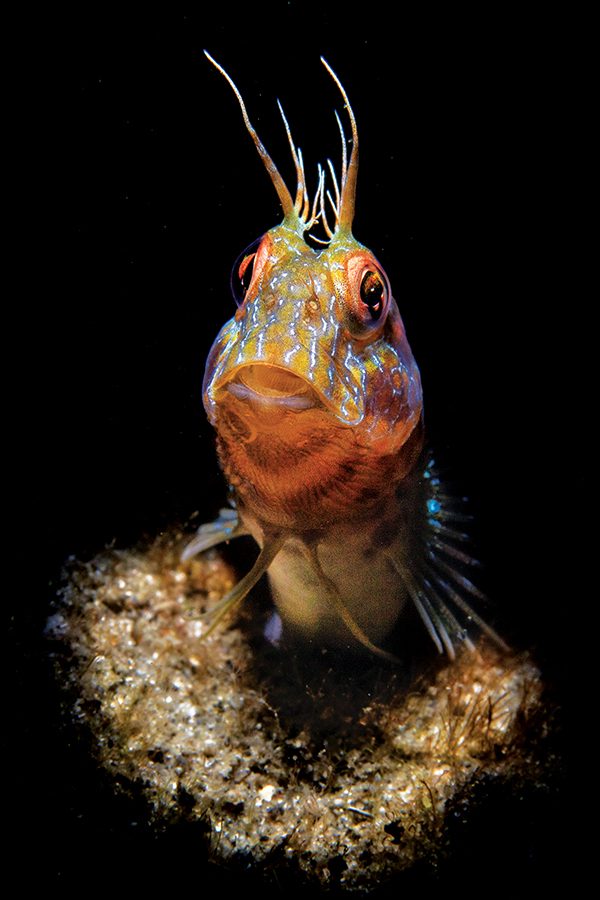
Les blennies des algues affichent leur personnalité lorsqu'elles sortent de leur tanière en jouant à cache-cache.
Les eaux peu profondes abritent des hippocampes, des poissons-grenouilles et des pieuvres, dont beaucoup se trouvent dans un mètre ou deux d'eau, à peine au large de la plage. Des grondins et des mergules volants se promènent sur le fond, et un banc de gros poissons-perroquets arc-en-ciel fréquente la zone et se nourrit à la marée montante. Les anguilles de jardin jouent leur jeu de la boîte à outils à mesure que l'on s'approche et que l'on s'éloigne, et les poissons-coffres de buffle et les poissons-filets sont fréquents dans les herbes.
Des poissons-grenouilles de toutes les couleurs, formes et tailles arrivent à la fin de l'hiver ou au début du printemps. Le BHB abrite des poissons-grenouilles striés, ocellés et nains, et il n'est pas rare d'en voir une demi-douzaine lors d'une seule plongée. Les plongeurs patients et habiles peuvent découvrir des poissons-grenouilles nains bien camouflés dans les fonds marins. Un poisson-grenouille à sargasse est une rareté qui nécessite des contrôles fréquents et un examen minutieux de la sargasse flottant à la surface. Certains plongeurs chanceux ont assisté au rituel de ponte des poissons-grenouilles, lorsque la femelle libère ses œufs dans la colonne d'eau et que les mâles nagent avec empressement dans le nuage pour féconder les œufs.
Lined and longsnout seahorses in various textures, colors, and patterns visit, but they are challenging to find at times — the frillier ones and juveniles blend perfectly with their grassy surroundings. Others hide in sponges matching their coloration. On a few occasions we’ve seen a bright red one standing out like a sore thumb, brazenly swimming through the sandy, grassy areas, tail clinging to seagrass as it slowly hunts for food, seemingly without a care in the world. They are often in mated pairs, and some divers have been fortunate to witness females passing their eggs to the male’s specialized brooding pouch or the male hatching babies into the water.
Octopuses become scarce over the winter, but in early spring Atlantic longarm, Caribbean reef, brown-striped, and common octopuses start to return in numbers. Octopuses seem to adjust to divers and are often out and about in the sand during the day. Sometimes they are playful, and it seems as if they are posing for the camera with some of their antics — changing colors and textures, grabbing shells to decorate their dens, and pouring like liquid into crevices and holes. Bottles and cans are favorite spots for them to make homes.
Every dive can be a surprise —
you never know what’s lurking in the next high tide.
More than 100 species of nudibranchs and sea slugs are at BHB, but most are tiny, unlike those in the Indo-Pacific. Divers with extreme patience, a keen eye, and knowledge of the habitat enjoy the search and successfully find these small creatures. Admittedly, we have yet to develop that skill, or maybe we don’t have the sharp eyesight required, so we rely on the assistance of more advanced nudibranch finders. Photographing them requires strong diopters. On the larger side, Florida regal sea goddesses occasionally find their way from offshore wrecks to BHB. We had a pleasant surprise this past fall with the arrival of a few Janolus flavoanulatus, which aren’t invasive, but they don’t belong here and typically live in the Western Indo-Pacific. Speculation is that they hitched a ride on a cargo ship. They disappeared a few weeks later, almost as abruptly as they arrived.
After spending time in the shallows off the beach, we head off to explore one of the bridges shortly before high tide. Covering the east- and west-side bridges in a single dive is too much. It’s more fun exploring a smaller area, so we pick one and save the other for another day. It’s incredible what you can find using a slow and steady approach. Urchins and starfish pepper the sandy, shelly areas leading to the east bridge, which are excellent places to stop and look for tiny sea life such as bumble bee shrimp. Decorator urchins pile on an amusing amount of junk to camouflage themselves. There are a few unusual critters such as tiger mantis shrimp, decorator crabs, bobbit worms, pipefish, and three species of batfish (polka-dot, shortnose, and roughback). Scorpionfish and stargazers lie entirely camouflaged on the bottom, stealthily awaiting their prey. Yellowhead and banded jawfish can be found in their burrows, sometimes with the male mouthbrooding eggs. Caribbean reef squid and grass squid are occasionally in the water column. Under the east bridge is home to lobsters, green and spotted moray eels, cardinalfish, and seahorses.
Un mâle de sandre à gorge bleue montre de sa gorge et de sa nageoire dorsale afin d'impressionner et d'attirer les femelles qui se trouvent à proximité.
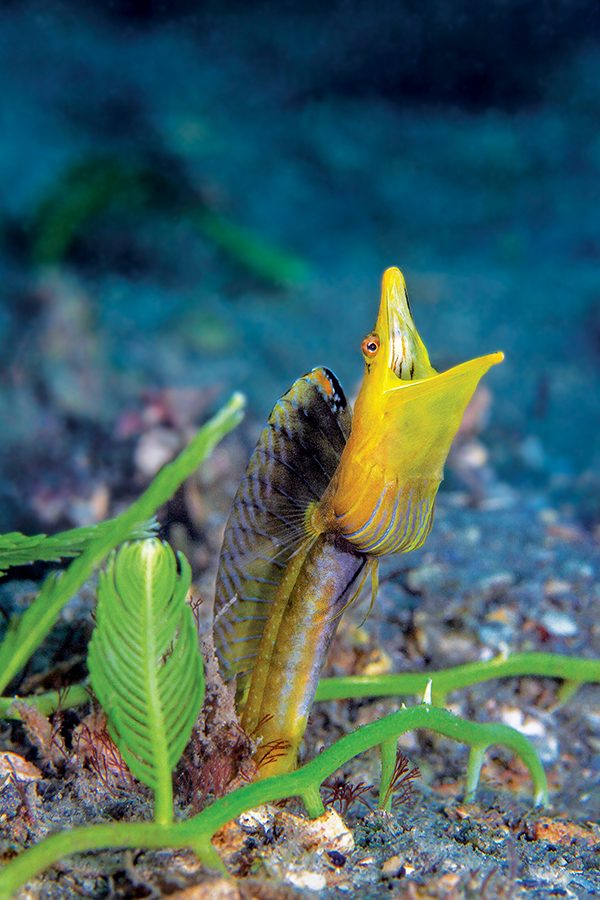
A female Caribbean reef octopus selected the east bridge to raise her eggs early this year, making her final home in an 8-inch abandoned pipe about 3 feet off the sand. Seeking safety and privacy, she attached her clutch of eggs to the pipe’s walls about a foot back from the opening, her arms in constant motion aerating and cleaning the eggs. After the first sighting early in March, she stayed in her den for the next six weeks until her eggs hatched. She was gone about a week after the eggs hatched. It was extraordinary and humbling to check on her and watch the babies’ development. The cycle of life continues, and it was wonderful to share in it.
Le pont ouest traverse le principal chenal de navigation et est beaucoup plus haut pour permettre le passage des grands bateaux. La zone de plongée abrite une grande partie de la même vie marine que la partie est. De grands poissons-anges gris, français et royaux ainsi que des bancs de poissons-spades nagent sous la travée. Des éponges colorées recouvrent les grands piliers qui soutiennent le pont et servent d'habitat aux crabes à flèche, aux crevettes coralliennes à bandes et aux blennies. Un monticule de sable couvert d'herbes marines juste au sud de la travée abrite des limaces à bouclier, des bernard-l'ermite colorés et des sandres à gorge bleue. Les deux ponts sont agréables à plonger, avec de nombreuses similitudes dans la vie marine, mais l'action peut changer au fil du temps d'un pont à l'autre.
Nous faisons généralement de la macro au BHB, mais la vie marine plus importante passe parfois par là. La surprise peut être grande lorsque votre visage est proche du fond alors que vous cherchez de minuscules créatures et que vous vous retrouvez face à face avec un mérou goliath lorsque vous levez les yeux. Bien qu'ils soient dociles, voir un poisson de la taille d'une petite voiture sous le pont peut vous faire sursauter. Les raies aigles tachetées sont relativement fréquentes, chassant au gré des marées par groupes de deux à quatre. Les lamantins recherchent parfois des eaux plus chaudes en hiver, les requins nourrices ne sont pas rares et les plongeurs peuvent parfois apercevoir une tortue.
Les plongées nocturnes au BHB sont également une excellente occasion de découvrir la faune et la flore marines qui se cachent généralement pendant la journée. Le parc ferme au coucher du soleil, mais les magasins de plongée locaux organisent des plongées nocturnes deux fois par mois. Vous avez besoin d'un laissez-passer spécial, disponible gratuitement auprès du magasin de plongée local qui organise la plongée de nuit.
We’ve been residents of Palm Beach County since 2020 and retired here in part because of the variety of dive opportunities. We love Blue Heron Bridge and dive here as often as possible when the conditions are good and the tides cooperate. We dive year-round with water temperatures ranging from 72°F to 86°F. Its variety, never-ending surprises of exotic marine life, fantastic dive community, incredible photographic opportunities, and ease of access make it a dive site that’s hard to beat anywhere in the world. AD
EN SAVOIR PLUS
Découvrez plus de ce que le pont Blue Heron offre dans une galerie de photos et ces vidéos.
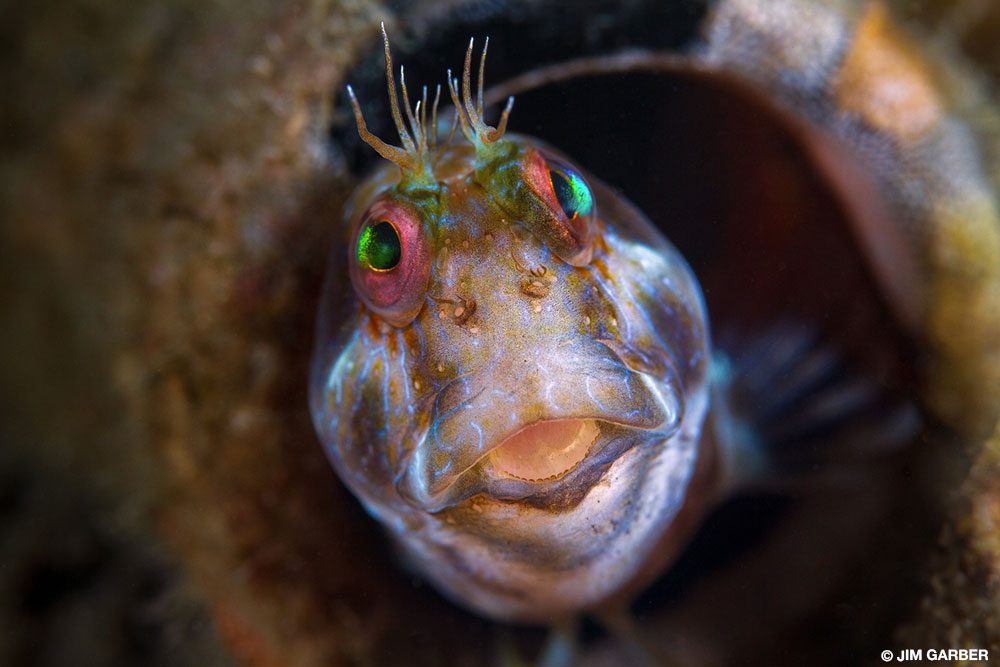
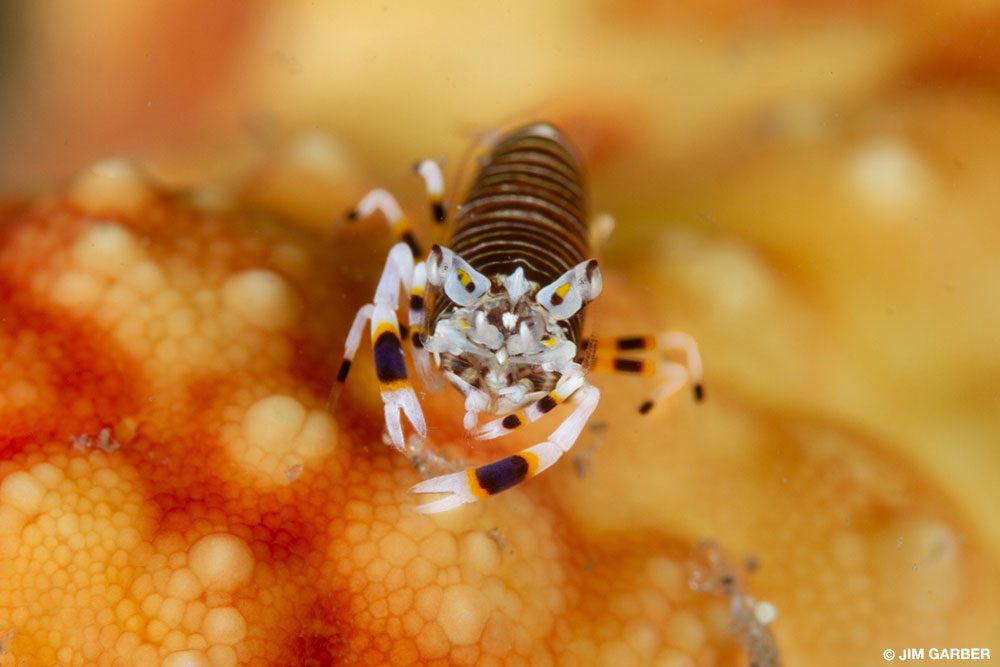

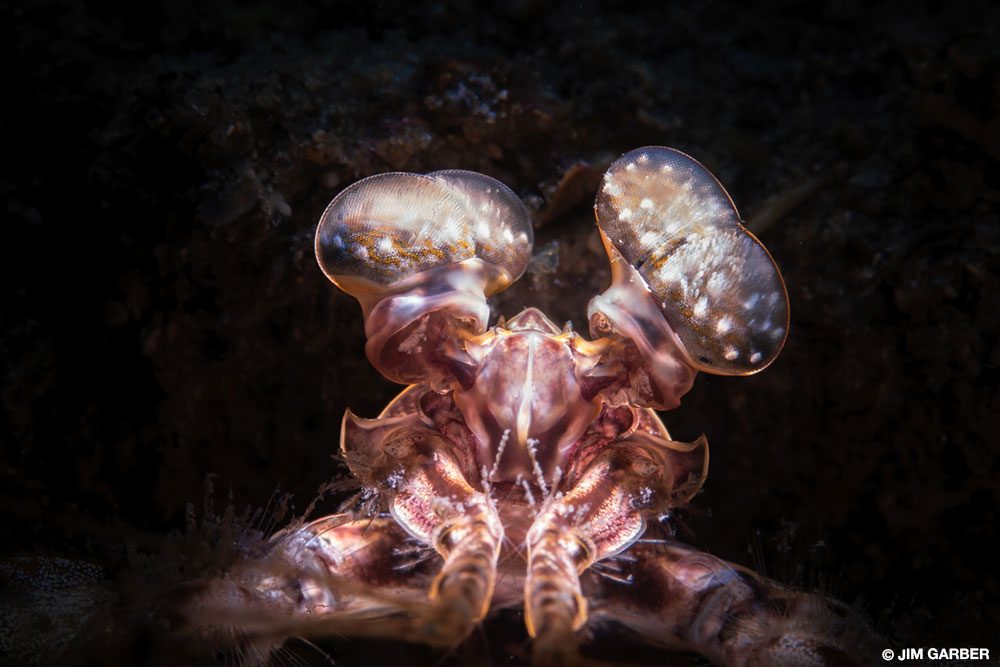
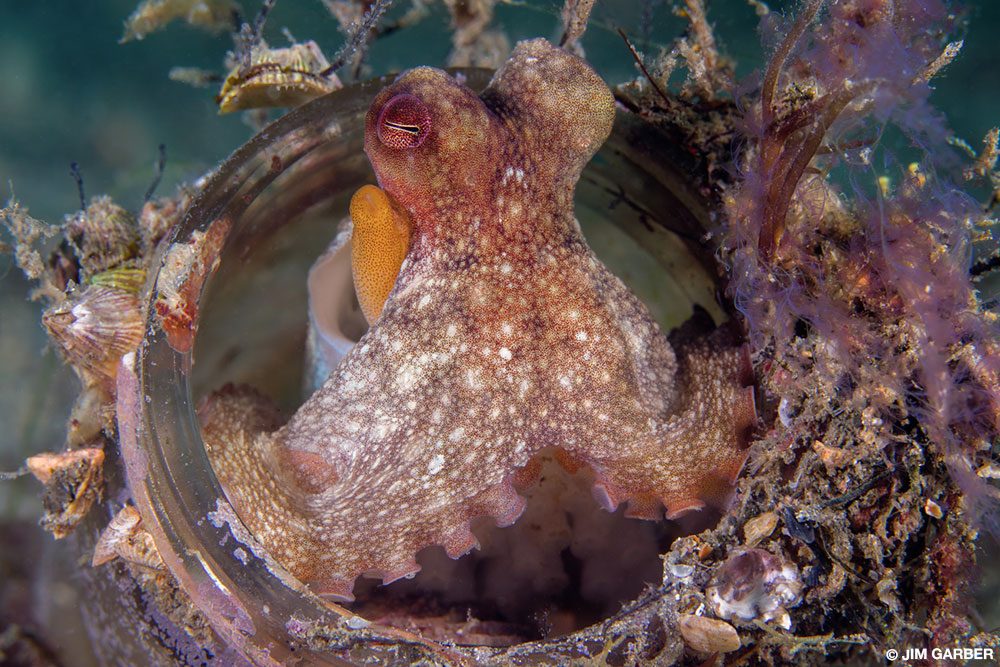
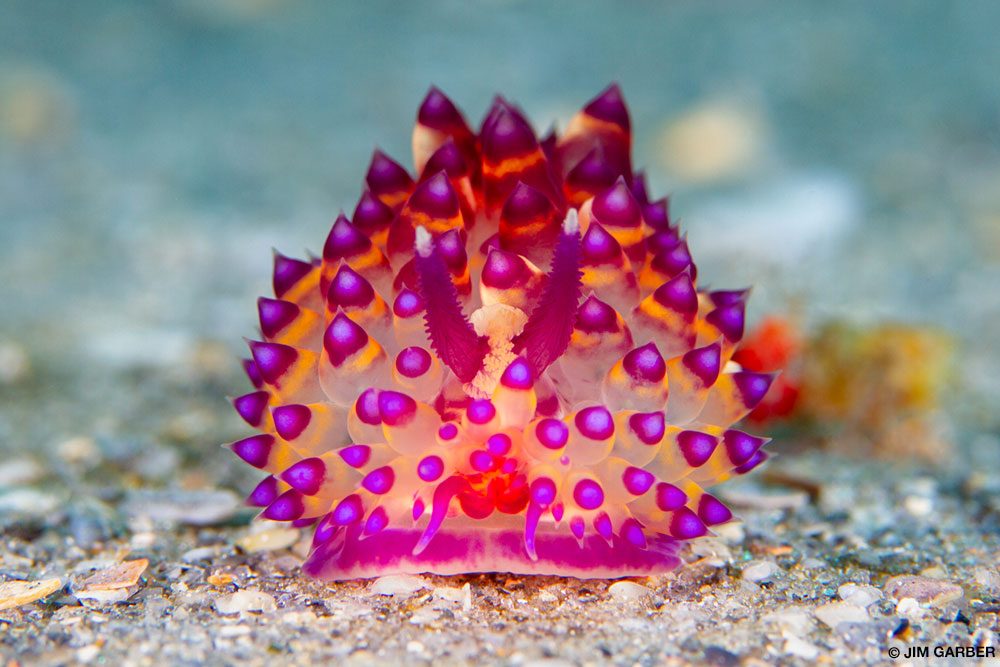
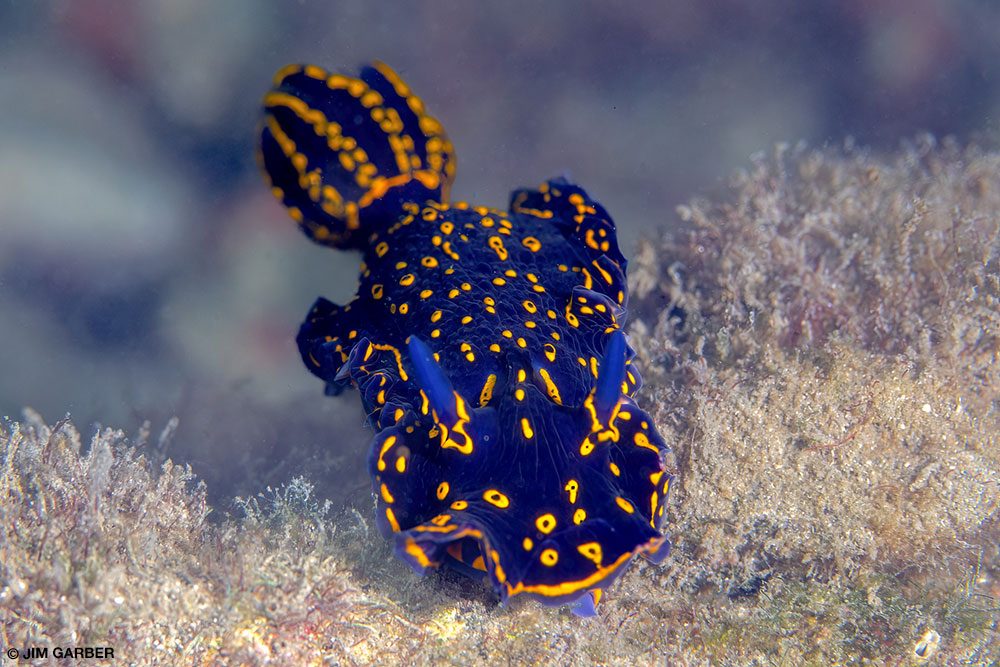
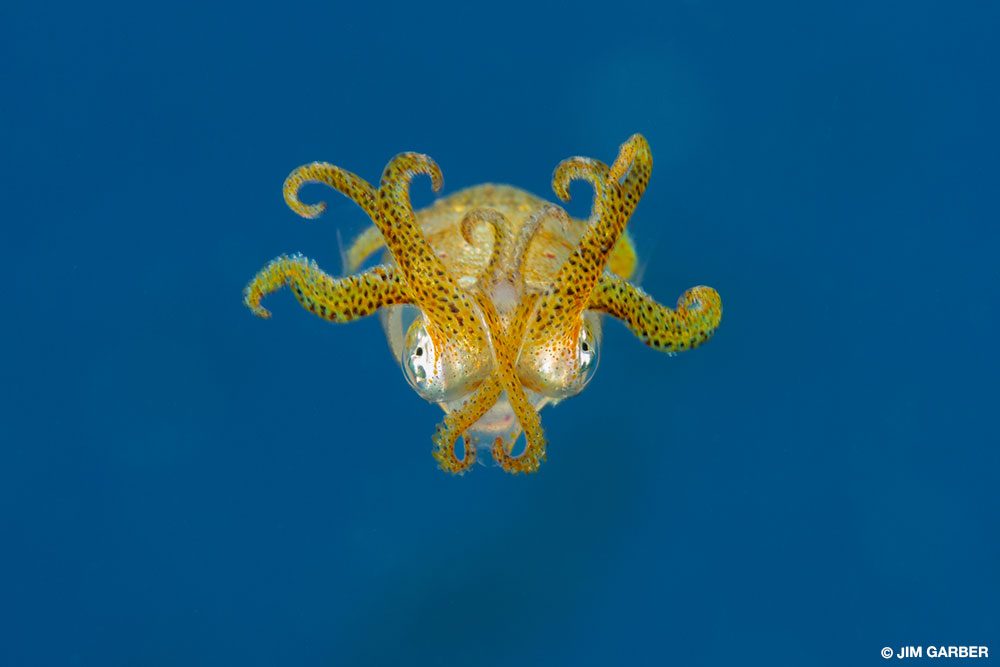




















https://youtube.com/watch?v=ConH2nL5WdA%3Ffeature%3Doembedhttps%3A
© Alert Diver - Q3 2022